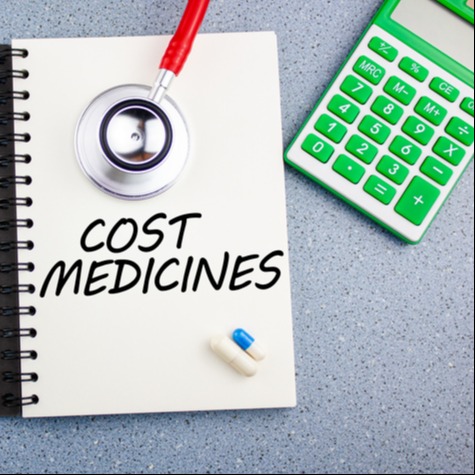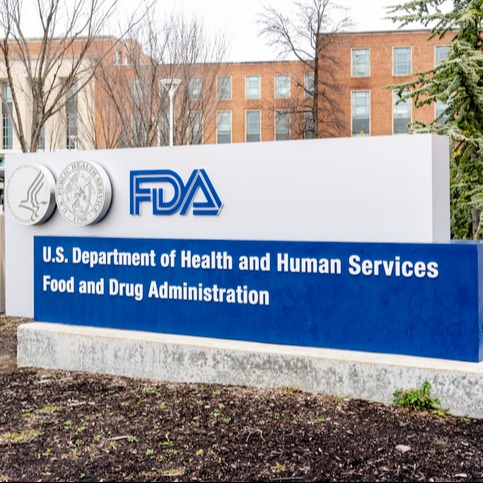
The concept of "pharmacy deserts" might not be as well-known as food deserts, but its implications for public health are profoundly significant. These areas, typically underserved urban or rural locations, lack convenient access to pharmacies, posing substantial barriers to healthcare for residents. The absence of nearby pharmacy services not only complicates the process of filling prescriptions but also disrupts the ongoing health consultations that pharmacists provide. This situation raises several questions: How are these deserts created, and what can be done to mitigate their impact? As we explore potential solutions, the broader socio-economic implications of this issue come into sharper focus, suggesting that the remedy may require innovative approaches beyond traditional healthcare models.
Key Takeaways
Pharmacy deserts contribute to a 3% drop in medication adherence, worsening health outcomes.
Areas with limited pharmacy access see a 1.8% rise in hospital admissions.
Emergency room visits are 2.7% higher in regions without adequate pharmacy services.
Residents in pharmacy deserts face increased rates of preventable diseases and lower vaccination uptake.
Closing pharmacies in underserved areas exacerbates health disparities and limits access to essential medications.
Defining Pharmacy Deserts
Pharmacy deserts, a critical yet often overlooked issue, are areas where access to pharmacies is severely limited or nonexistent. These regions span both urban and rural settings, with rural residents often situated more than 10 miles from the nearest pharmacy, while urban dwellers may find themselves over a mile away from such facilities. This lack of access impacts approximately 15.8 million people across the United States, highlighting a significant gap in the availability of essential healthcare services.
In these underserved communities, the prevalence of pharmacy deserts is alarmingly high, particularly among minority populations. Statistics indicate that 38.5% of Black neighborhoods and 39.5% of Hispanic neighborhoods are affected, underscoring the racial and ethnic disparities in healthcare access. This situation contributes to poorer health outcomes, including decreased medication adherence and the exacerbation of chronic health conditions.
Furthermore, nearly half of all U.S. counties contain areas classified as pharmacy deserts, which not only complicates the logistics of obtaining necessary medications but also limits opportunities for diagnostic and preventive care. The existence of these deserts thus plays a crucial role in perpetuating health disparities and obstructing efforts toward equitable healthcare.
Causes of Pharmacy Deserts
Several factors contribute to the emergence of pharmacy deserts, with the closure of community pharmacies being chief among them. This trend is largely driven by economic challenges and regulatory hurdles that disproportionately impact independent pharmacies in low-income areas. The financial viability of these pharmacies is often compromised due to lower patient volumes, leading to an increased frequency of closures.
Key reasons behind the creation of pharmacy deserts include:
Community Pharmacy Closures: Nearly 10,000 pharmacies closed in the U.S. between 2009 and 2015, with a significant number located in underserved neighborhoods, exacerbating local access issues.
Transportation Issues: In many pharmacy deserts, residents lack reliable transportation, making it challenging to travel to distant pharmacies. This barrier is particularly acute in rural and impoverished urban areas, where public transit options are limited or nonexistent.
Racial and Ethnic Disparities: Pharmacy deserts are more prevalent in Black and Hispanic neighborhoods, reflecting broader systemic inequities. These areas often suffer from reduced health insurance coverage and limited access to healthcare services, further hindering residents' ability to obtain necessary medications and consultations.
Effects on Health Outcomes
The consequences of limited pharmacy access extend beyond mere inconvenience, significantly impacting public health outcomes. Pharmacy deserts—areas with sparse or no access to pharmacies—lead to notable health disparities. These regions often experience worsened medication adherence, as patients struggle to obtain necessary prescriptions, directly affecting the management of chronic conditions.
A lack of access to pharmacies not only hinders regular medication procurement but also strains the overall healthcare system through increased emergency visits and hospital admissions. Vulnerable populations, who are most impacted by these deserts, face higher rates of preventable diseases due to lower vaccination rates and compromised disease prevention.
Here is a summary of the key impacts, presented in a comparative format:
Impact Area | Effect |
Medication Adherence | 3% lower in pharmacy deserts |
Hospital Admissions | 1.8% increase in areas without sufficient pharmacy access |
Emergency Visits | 2.7% more frequent due to unmanaged chronic conditions |
These statistics underline the critical role pharmacies play in health maintenance and the dire consequences of inadequate access. Addressing gaps in pharmacy availability could significantly improve health outcomes and reduce the burden on emergency healthcare services.
Potential Solutions
Addressing the challenges posed by pharmacy deserts requires innovative and targeted solutions to ensure that all individuals have access to essential pharmacy services. The following strategies could significantly mitigate the impact of these deserts:
Implement Telepharmacy Services: Expanding telepharmacy services allows for remote consultations and medication management, serving as a crucial resource in areas lacking physical pharmacy locations. This technology-driven approach reduces the need for physical travel and ensures continuous access to pharmaceutical care.
Develop Mobile Pharmacies: Introducing mobile pharmacies can directly address transportation barriers by bringing medications and health services to the doorsteps of those living in underserved communities. This solution not only enhances medication delivery but also facilitates on-the-spot health consultations.
Increase Government Funding and Community Engagement: Allocating more government funding to the development of pharmacies in low-income and remote areas can catalyze the establishment of permanent pharmacy solutions. Simultaneously, fostering community engagement helps raise awareness about available services and encourages local support for sustainable health resources.
Case Studies Analysis
Building on potential solutions to mitigate the effects of pharmacy deserts, a closer examination of case studies provides concrete evidence of their impact across different communities. In urban areas, the designation of pharmacy deserts often forces residents to travel more than a mile to access a pharmacy, exacerbating missed doses and subsequent poor health outcomes. These areas, characterized by high social vulnerability, show a 30%-40% higher likelihood of limited pharmacy access, underscoring the direct correlation between socio-economic status and health disparities.
Further research highlights that the closure of nearly 10,000 pharmacies between 2009 and 2015 predominantly impacted low-income neighborhoods, significantly obstructing access to necessary medications and healthcare services in medically underserved areas. Such closures have directly contributed to the increased prevalence of chronic conditions like diabetes and hypertension in these communities, due to ongoing challenges in obtaining essential medications.
These case studies underline the critical importance of addressing pharmacy deserts as part of broader health equity efforts. Ensuring easier access to pharmacies can dramatically improve health outcomes and reduce disparities, particularly in vulnerable populations that bear the brunt of limited healthcare infrastructure.
Frequently Asked Questions
What Are the Effects of Pharmacy Deserts?
Pharmacy deserts lead to reduced access to medications and healthcare services, resulting in increased medication non-adherence and the exacerbation of chronic health conditions. This, in turn, worsens overall health outcomes and widens disparities in healthcare access and quality for affected populations.
What Is the Pharmacy Desert Act?
The Pharmacy Desert Act is proposed legislation designed to increase pharmacy accessibility in underserved areas by providing financial incentives and supporting independent pharmacies. The goal is to enhance healthcare access and improve outcomes for vulnerable populations.
What Is the Biggest Issue Facing Pharmacy Today?
The most pressing issue facing pharmacies today is adapting to the digital transformation, which includes integrating e-prescriptions, telehealth services, and online customer interfaces, all while maintaining personalized care and managing increasing operational costs.
What Is a Pharmacy Desert?
A pharmacy desert is an area where access to pharmacies is significantly limited or nonexistent, often affecting rural and underserved urban communities. This leads to challenges in obtaining prescription medications and other health-related services.
Rely on PlanetDrugsDirect.com to Buy Online Prescription Drugs
As a trusted prescription referral service, we offer important benefits whenever you order online. Each of our partner pharmacies and/or government-approved dispensaries is committed to providing the best experience possible of any online prescription referral service on the internet. We offer:
Low prices
Quick turn-around times
Generic and brand-name medications
Unparalleled customer service
Sources
Urick BY, Adams JK, Bruce MR. State Telepharmacy Policies and Pharmacy Deserts. JAMA Netw Open. 2023 Aug 1;6(8):e2328810. doi: 10.1001/jamanetworkopen.2023.28810.
Ying X, Kahn P, Mathis WS. Pharmacy deserts: More than where pharmacies are. J Am Pharm Assoc (2003). 2022 Nov-Dec;62(6):1875-1879. doi: 10.1016/j.japh.2022.06.016.
Catalano G, Khan MMM, Chatzipanagiotou OP, Pawlik TM. Pharmacy Accessibility and Social Vulnerability. JAMA Netw Open. 2024 Aug 1;7(8):e2429755. doi: 10.1001/jamanetworkopen.2024.29755.
Pharmacy desers: A growing problem in the U.S. https://www.maxor.com/pharmacy-deserts/. Accessed March 8, 2025.
Sahota H, Guzman S, Tordera L, Chan M, Cocohoba J, Saberi P. Pharmacy Deserts and Pharmacies' Roles Post-Extreme Weather and Climate Events in the United States: A Scoping Review. J Prim Care Community Health. 2023 Jan-Dec;14:21501319231186497. doi: 10.1177/21501319231186497.
 Medically reviewed by
Medically reviewed by 





